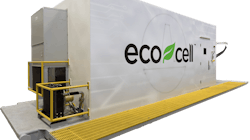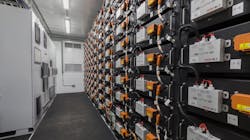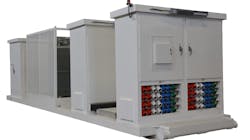Reducing Emissions on Drilling Rigs Improves Operations and the Environment
Companies engaged in hydrocarbon exploration are challenged more than ever to reduce emissions. Stakeholder expectations are evolving, and there is an increasing demand for companies to demonstrate responsible environmental, social, and governance (ESG) policies. This means that in addition to looking for technologies that help reduce costs, companies also are searching for technologies that help decrease greenhouse gas (GHG) emissions and reduce the carbon footprint of operations.
The increased pressure to reduce overall environmental impact has many organizations committing to future net zero goals. To achieve this objective, companies are turning to their service providers for innovative sustainable solutions they can apply to exploration and production.
Hybrid Battery Power
Many solutions for reducing the environmental impact of operations are cost-prohibitive, but there are some affordable technologies that merit consideration. Hybrid battery storage with energy management software is one of them.
A battery management system can reduce emissions from existing prime movers by leveraging stored energy to optimize fuel efficiency. This system is compatible with diesel and natural gas engines and is particularly effective when used with dual-fuel engines. The battery storage system maximizes substitution rates to significantly reduce diesel consumption. Decreasing fuel consumption delivers quantifiable financial savings, and for every gallon of fuel eliminated, there is an associated reduction in GHG emissions and a smaller carbon footprint.
Electrifying the Rig
While utility power utilization is gaining ground in the drilling sector, it is not as prevalent as other power sources. Portable substations specifically designed to connect drilling rigs to utility power are enabling owners to connect assets to the grid when rigs are working in locations where the grid is accessible. The substations are installed on self-contained skids that can be transported to a wellsite in a single truckload, and they connect to the drilling rigs by simply plugging into the existing generator connections.
Understanding the value of a substation starts with recognizing that not all substations are created equal and that superior substations use a multi-pronged approach to deliver value. Ideally, a substation utilizes a software system that looks at the voltages, harmonics, and power factor to optimize power quality via large, inductor-capacitor circuits that provide the power quality required by electric utilities.
Regenerative Land Rigs
Drilling contractors are pursuing technology implementation that helps them meet their ESG goals by deriving power from greener energy sources and reducing energy waste. One method that companies can put to work to achieve these objectives is equipping a rig for regenerative power. This technology is not yet common in the oil and gas industry, but it is a proven solution that has been applied in the mining sector for some time.
The variable speed drives and motors used on large mining excavators are similar to those installed on modern drilling rigs. A significant amount of energy is generated when a string of pipe is lowered into a well during drilling operations. The weight of the string moving down the mast generates kinetic energy, and a considerable amount of power is generated at the end of travel due to the rotational inertia of the drawworks. The energy from these sources is converted to heat by large dynamic braking resistors.
Repurposing harnessed energy as regenerative power with the use of converters in electric mining excavators is a proven and effective way to send the generated power back to the power grid. Using the same power converters and software in a similar way on a drilling rig can make efficient use of energy that historically has been wasted.
Taking the Next Step
Effective tools for energy conservation and optimization are available, affordable, and applicable to the drilling industry, and they have the potential to deliver on multiple levels from better project economics to improved environmental stewardship.
Weighing the costs and benefits of new technologies can be daunting, but making the transition to new ways of working is much easier when the “new” technologies have already proven their viability in other sectors.
About the Author
Marcus Howell
Marcus Howell is the Director of Automation Technology for Patterson-UTI supporting all entities and their strategic innovation alignment.



